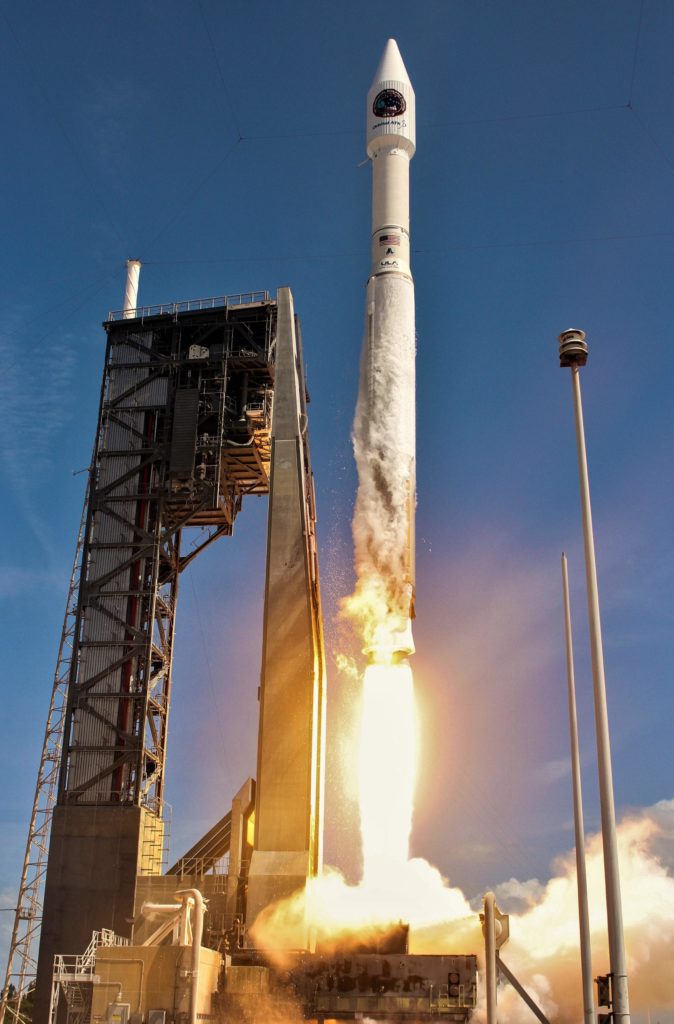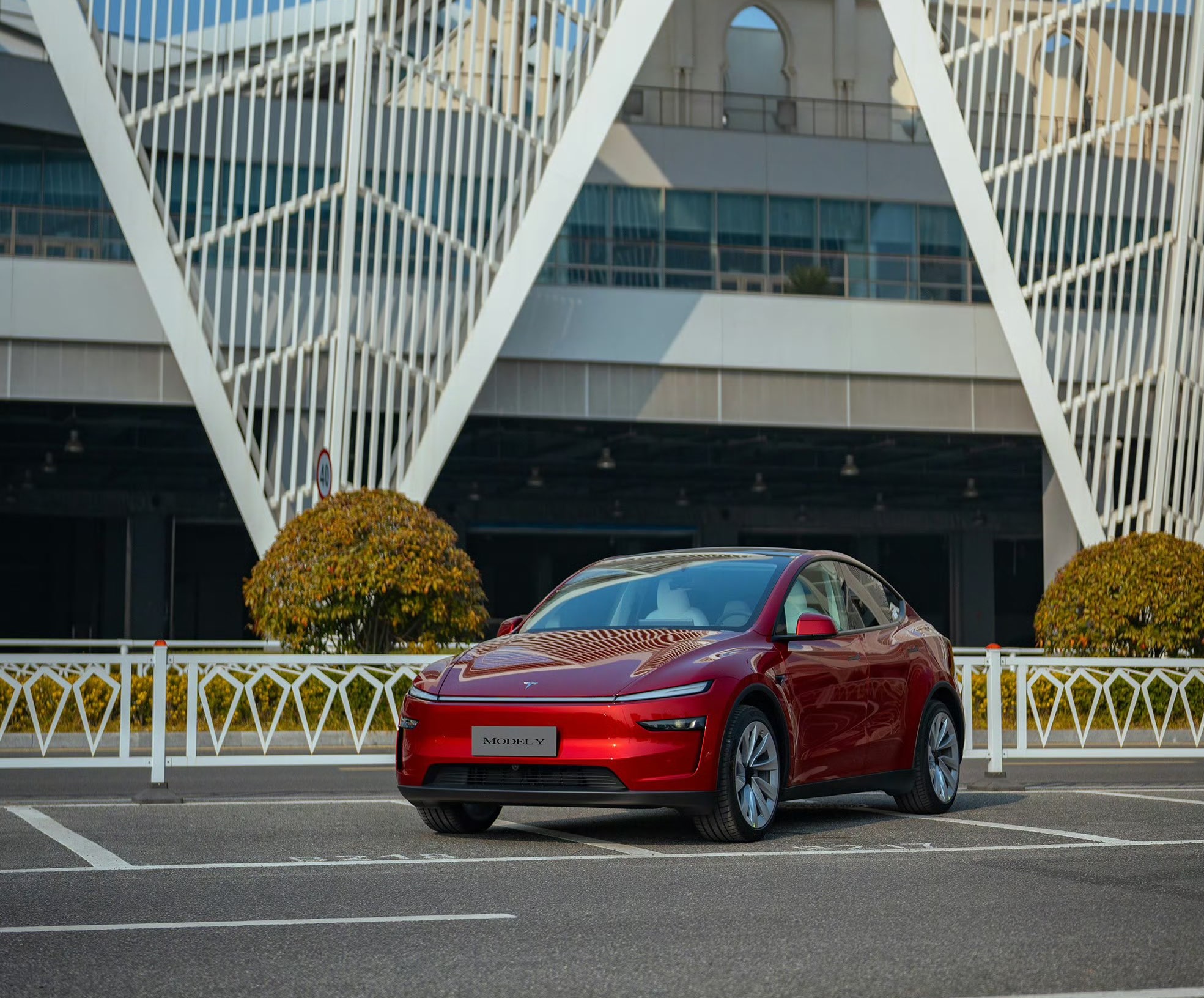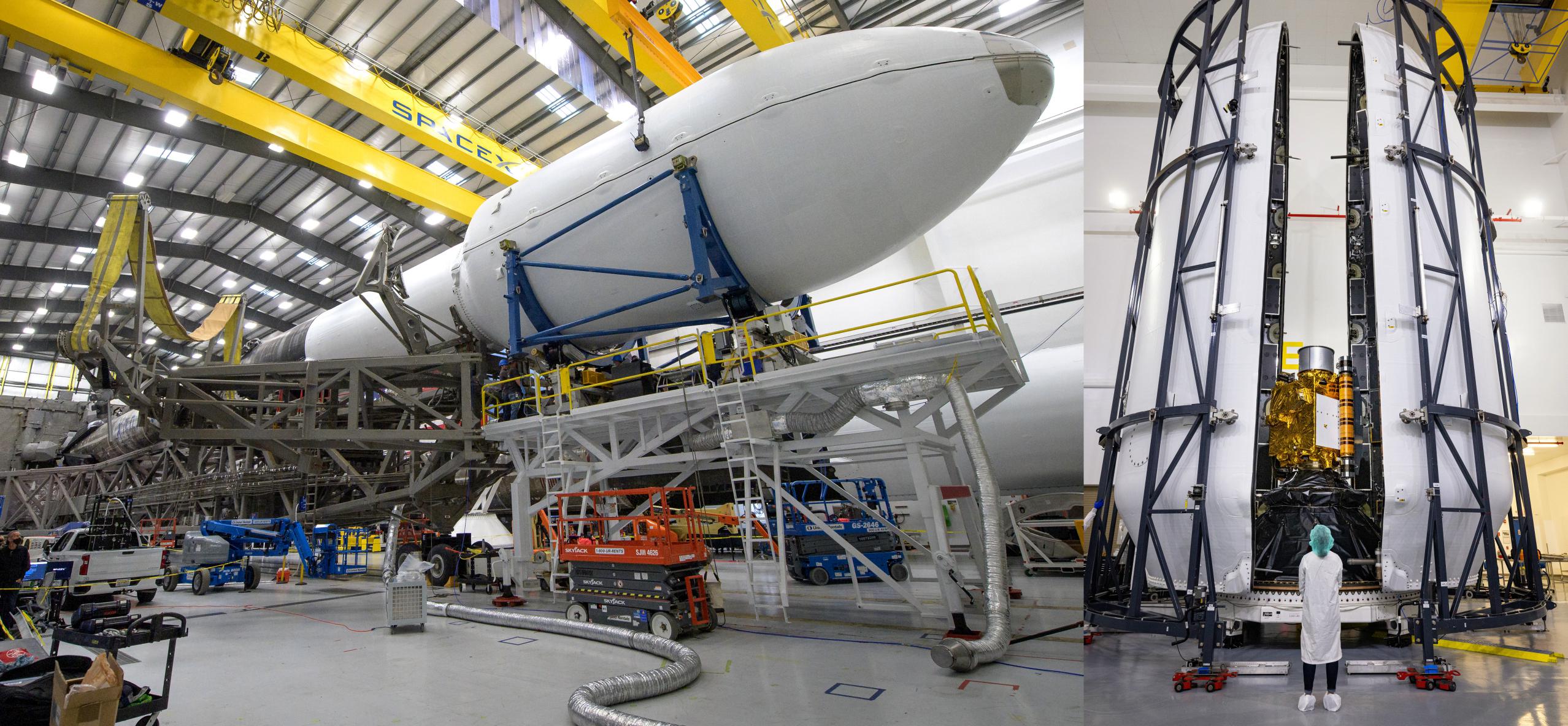NASA says SpaceX has finished encapsulating its DART asteroid redirection spacecraft inside Falcon 9’s fairing and opened up its West Coast launch pad hangar to give VIPs and mission team members a tour of their rocket.
Measuring 70m (230ft) tall, 550 metric tons (1.2M lb) fully fueled, and capable of producing more than 775 tons (1.71M lbf) of thrust at liftoff, Falcon 9 remains on track to launch NASA’s Double Asteroid Redirection Test mission no earlier than 10:21 pm PST, Wednesday, November 23rd (06:21 UTC 24 Nov). While there are multiple conflicting reports of the spacecraft’s launch mass, it will likely weigh between 600 and 650 kg (1300-1450 lb) – a minuscule 0.1% of the rocket’s total mass at liftoff. In simpler terms, Falcon 9 launching DART is a bit like a semi-truck carrying a single piece of wood.
Nevertheless, just like that semi-truck scenario, it might not be the most efficient choice of vehicle but sometimes a one-size-fits-all rocket like Falcon 9 can make a lot of sense.
Notably, despite being outsized by at least a factor of 2-3, Falcon 9’s DART launch will ultimately cost NASA about $73M – about a quarter of the mission’s total ~$250M cost. Nominally headed to interplanetary space, there isn’t a smallsat launcher (i.e. Firefly Alpha, Relativity Terran-1, Virgin Orbit LauncherOne, ABL Space RS-1, etc.) currently in development that’s expected to be able to launch a ~600 kg payload onto the interplanetary trajectory Falcon 9 will send DART on. If there were, it might theoretically cost NASA just ~$20M to launch DART but it will also take years for any of the new small to midsize rockets that might have enough performance to establish a track record of reliability, meaning that NASA would have to accept significant risk for that potential discount.

It’s worth noting that based on several comments from executives indicating that a flight-proven Falcon 9 costs about $15-25M to launch, SpaceX could almost certainly charge NASA half as much to launch DART while still breaking even, with its routine reusability making the potential economic advantage of smaller rockets much murkier. Additionally, despite the potential to save another $30-50M, NASA is still likely saving at least $80-100 million by launching on a $73M Falcon 9 rocket rather than the United Launch Alliance’s (ULA) cheapest Atlas V offering, which NASA has paid around $150-175M for in recent years.
While SpaceX has technically launched two similarly tiny NASA payloads to very high orbits ~300,000 and ~900,000 km (150,000-600,000 mi) away from Earth in 2015 and 2018, as well as CEO Elon Musk’s Tesla Roadster on an Earth escape trajectory with Falcon Heavy, data from JPL recently confirmed that DART will be Falcon 9’s first truly interplanetary launch. After reaching a normal low Earth parking orbit, Falcon 9’s expendable upper stage will ultimately boost the small spacecraft free of Earth’s gravity, sending it into a heliocentric orbit that will eventually intersect with the binary Didymos-Dimorphos asteroid system.
As early as September 2022, DART will slam into asteroid moon Dimorphos while traveling a staggering 6.6 kilometers per second (4.1 mi/s) in an attempt to shift its orbit around the larger Didymos asteroid. In effect, NASA is using the asteroid system a bit like an isolated sandbox to (hopefully) exaggerate any effects. If successful, DART will prove that kinetic impactors offer a viable way to change the course of asteroids and comets, potentially paving the way for the creation of a true planetary defense program.
Elon Musk
Tesla analysts believe Musk and Trump feud will pass
Tesla CEO Elon Musk and U.S. President Donald Trump’s feud shall pass, several bulls say.

Tesla analysts are breaking down the current feud between CEO Elon Musk and U.S. President Donald Trump, as the two continue to disagree on the “Big Beautiful Bill” and its impact on the country’s national debt.
Musk, who headed the Department of Government Efficiency (DOGE) under the Trump Administration, left his post in May. Soon thereafter, he and President Trump entered a very public and verbal disagreement, where things turned sour. They reconciled to an extent, and things seemed to be in the past.
However, the second disagreement between the two started on Monday, as Musk continued to push back on the “Big Beautiful Bill” that the Trump administration is attempting to sign into law. It would, by Musk’s estimation, increase spending and reverse the work DOGE did to trim the deficit.
Every member of Congress who campaigned on reducing government spending and then immediately voted for the biggest debt increase in history should hang their head in shame!
And they will lose their primary next year if it is the last thing I do on this Earth.
— Elon Musk (@elonmusk) June 30, 2025
President Trump has hinted that DOGE could be “the monster” that “eats Elon,” threatening to end the subsidies that SpaceX and Tesla receive. Musk has not been opposed to ending government subsidies for companies, including his own, as long as they are all abolished.
How Tesla could benefit from the ‘Big Beautiful Bill’ that axes EV subsidies
Despite this contentious back-and-forth between the two, analysts are sharing their opinions now, and a few of the more bullish Tesla observers are convinced that this feud will pass, Trump and Musk will resolve their differences as they have before, and things will return to normal.
ARK Invest’s Cathie Wood said this morning that the feud between Musk and Trump is another example of “this too shall pass:”
BREAKING: CATHIE WOOD SAYS — ELON AND TRUMP FEUD “WILL PASS” 👀 $TSLA
She remains bullish ! pic.twitter.com/w5rW2gfCkx
— TheSonOfWalkley (@TheSonOfWalkley) July 1, 2025
Additionally, Wedbush’s Dan Ives, in a note to investors this morning, said that the situation “will settle:”
“We believe this situation will settle and at the end of the day Musk needs Trump and Trump needs Musk given the AI Arms Race going on between the US and China. The jabs between Musk and Trump will continue as the Budget rolls through Congress but Tesla investors want Musk to focus on driving Tesla and stop this political angle…which has turned into a life of its own in a roller coaster ride since the November elections.”
Tesla shares are down about 5 percent at 3:10 p.m. on the East Coast.
Elon Musk
Tesla scrambles after Musk sidekick exit, CEO takes over sales
Tesla CEO Elon Musk is reportedly overseeing sales in North America and Europe, Bloomberg reports.

Tesla scrambled its executives around following the exit of CEO Elon Musk’s sidekick last week, Omead Afshar. Afshar was relieved of his duties as Head of Sales for both North America and Europe.
Bloomberg is reporting that Musk is now overseeing both regions for sales, according to sources familiar with the matter. Afshar left the company last week, likely due to slow sales in both markets, ending a seven-year term with the electric automaker.
Tesla’s Omead Afshar, known as Elon Musk’s right-hand man, leaves company: reports
Afshar was promoted to the role late last year as Musk was becoming more involved in the road to the White House with President Donald Trump.
Afshar, whose LinkedIn account stated he was working within the “Office of the CEO,” was known as Musk’s right-hand man for years.
Additionally, Tom Zhu, currently the Senior Vice President of Automotive at Tesla, will oversee sales in Asia, according to the report.
It is a scramble by Tesla to get the company’s proven executives over the pain points the automaker has found halfway through the year. Sales are looking to be close to the 1.8 million vehicles the company delivered in both of the past two years.
Tesla is pivoting to pay more attention to the struggling automotive sales that it has felt over the past six months. Although it is still performing well and is the best-selling EV maker by a long way, it is struggling to find growth despite redesigning its vehicles and launching new tech and improvements within them.
The company is also looking to focus more on its deployment of autonomous tech, especially as it recently launched its Robotaxi platform in Austin just over a week ago.
However, while this is the long-term catalyst for Tesla, sales still need some work, and it appears the company’s strategy is to put its biggest guns on its biggest problems.
News
Tesla upgrades Model 3 and Model Y in China, hikes price for long-range sedan
Tesla’s long-range Model 3 now comes with a higher CLTC-rated range of 753 km (468 miles).

Tesla has rolled out a series of quiet upgrades to its Model 3 and Model Y in China, enhancing range and performance for long-range variants. The updates come with a price hike for the Model 3 Long Range All-Wheel Drive, which now costs RMB 285,500 (about $39,300), up RMB 10,000 ($1,400) from the previous price.
Model 3 gets acceleration boost, extended range
Tesla’s long-range Model 3 now comes with a higher CLTC-rated range of 753 km (468 miles), up from 713 km (443 miles), and a faster 0–100 km/h acceleration time of 3.8 seconds, down from 4.4 seconds. These changes suggest that Tesla has bundled the previously optional Acceleration Boost for the Model 3, once priced at RMB 14,100 ($1,968), as a standard feature.
Delivery wait times for the long-range Model 3 have also been shortened, from 3–5 weeks to just 1–3 weeks, as per CNEV Post. No changes were made to the entry-level RWD or Performance versions, which retain their RMB 235,500 and RMB 339,500 price points, respectively. Wait times for those trims also remain at 1–3 weeks and 8–10 weeks.
Model Y range increases, pricing holds steady
The Model Y Long Range has also seen its CLTC-rated range increase from 719 km (447 miles) to 750 km (466 miles), though its price remains unchanged at RMB 313,500 ($43,759). The model maintains a 0–100 km/h time of 4.3 seconds.
Tesla also updated delivery times for the Model Y lineup. The Long Range variant now shows a wait time of 1–3 weeks, an improvement from the previous 3–5 weeks. The entry-level RWD version maintained its starting price of RMB 263,500, though its delivery window is now shorter at 2–4 weeks.
Tesla continues to offer several purchase incentives in China, including an RMB 8,000 discount for select paint options, an RMB 8,000 insurance subsidy, and five years of interest-free financing for eligible variants.
-

 Elon Musk24 hours ago
Elon Musk24 hours agoTesla investors will be shocked by Jim Cramer’s latest assessment
-

 News6 days ago
News6 days agoTesla Robotaxi’s biggest challenge seems to be this one thing
-

 News2 weeks ago
News2 weeks agoTesla’s Grok integration will be more realistic with this cool feature
-

 Elon Musk2 weeks ago
Elon Musk2 weeks agoElon Musk slams Bloomberg’s shocking xAI cash burn claims
-

 News2 weeks ago
News2 weeks agoTesla China roars back with highest vehicle registrations this Q2 so far
-

 News2 weeks ago
News2 weeks agoTexas lawmakers urge Tesla to delay Austin robotaxi launch to September
-

 News2 weeks ago
News2 weeks agoTesla dominates Cars.com’s Made in America Index with clean sweep
-

 Elon Musk1 week ago
Elon Musk1 week agoFirst Look at Tesla’s Robotaxi App: features, design, and more





















